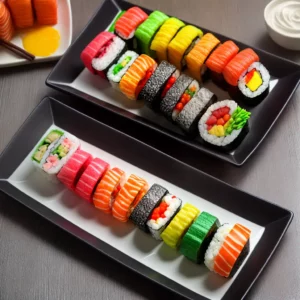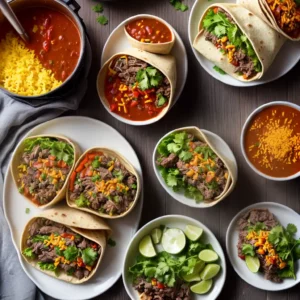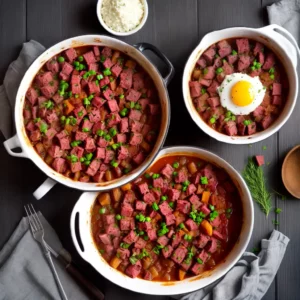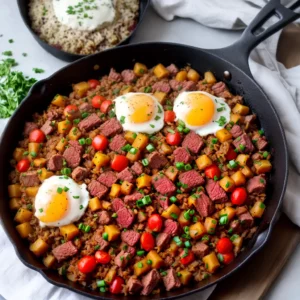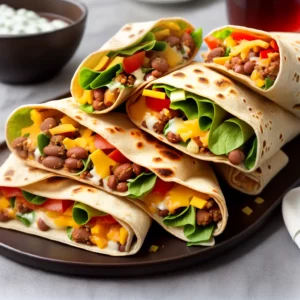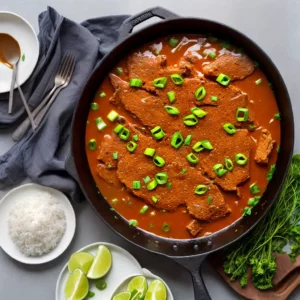When it comes to food safety, proper handling and storage of cooked chicken are crucial. You might be wondering, how long can cooked chicken sit out before it becomes unsafe to eat? Let’s explore the recommended guidelines to ensure that your cooked chicken remains safe and delicious.
Key Takeaways:
- Cooked chicken should not sit out at room temperature for more than two hours to prevent bacterial growth.
- Bacteria, such as Salmonella and E.coli, can multiply rapidly between 40°F and 140°F (the Danger Zone).
- Contrary to popular belief, covering cooked chicken does not make it safe to eat if it has been left out for too long.
- Reheating cooked chicken does not guarantee its safety as it may not eliminate all bacteria and toxins.
- Proper storage, cooling, and thawing methods are essential for maintaining the quality and safety of cooked chicken.
The Danger Zone: Understanding Bacteria Growth
Bacteria growth is a crucial factor to consider when it comes to the safe consumption of cooked chicken. Understanding the Danger Zone, which refers to the temperature range between 40°F and 140°F, is essential in preventing the proliferation of harmful bacteria such as Salmonella and E.coli.
Within the Danger Zone, bacteria can multiply rapidly, with their numbers doubling every 20 minutes. This means that if cooked chicken is left out at room temperature, millions of bacteria may be present within just a few hours. Consuming chicken that has been sitting in the Danger Zone for too long significantly increases the risk of food poisoning and related illnesses.
To protect yourself and your loved ones, it is crucial to adhere to proper food safety guidelines. Cooked chicken should not be left out at room temperature for more than two hours. To minimize bacterial growth, it is important to keep cooked chicken refrigerated below 40°F or hot above 140°F. By understanding the Danger Zone and taking necessary precautions, you can ensure the safe consumption of cooked chicken and reduce the risk of foodborne illnesses.
The Danger Zone and its Impact on Food Safety
The Danger Zone, a temperature range between 40°F and 140°F, is a critical factor in bacteria growth and food safety. Bacteria such as Salmonella and E.coli thrive in this range and can multiply rapidly, leading to potential foodborne illnesses.
It’s important to note that cooking chicken to the appropriate internal temperature is necessary to kill any existing bacteria. However, once cooked, it’s essential to handle the chicken properly to prevent bacterial growth. Leaving cooked chicken out at room temperature for an extended period, such as more than two hours, allows bacteria to multiply exponentially, posing a risk to your health.
Minimizing the Risk: Safe Handling and Storage
To minimize the risk of bacterial growth and ensure safe consumption, it’s crucial to follow proper handling and storage practices for cooked chicken. Here are some key tips:
- Always cool cooked chicken promptly within two hours after cooking to prevent bacterial growth. Cooling to room temperature before refrigeration is essential to maintain a safe temperature in the fridge.
- Keep cooked chicken refrigerated at or below 40°F or hot at or above 140°F to prevent the growth of bacteria. Use a refrigerator thermometer to ensure the fridge is at the proper temperature.
- Avoid cross-contamination by storing cooked chicken separate from raw chicken in the fridge. Raw chicken contains bacteria that can contaminate cooked chicken if they come into contact.
- Date the container when storing cooked chicken to keep track of its storage time. Discard any cooked chicken that has been left at room temperature for more than two hours.
By following these guidelines, you can significantly reduce the risk of foodborne illnesses associated with bacterial growth in cooked chicken. Prioritizing food safety when handling and storing food is crucial for the well-being of you and your family.
| Danger Zone Temperature Range | Key Points |
|---|---|
| 40°F and below | Refrigerate cooked chicken promptly at this temperature to maintain its freshness and safety. |
| Between 40°F and 140°F | Avoid leaving cooked chicken at room temperature within this range for an extended period to prevent rapid bacterial growth. |
| 140°F and above | If you’re keeping cooked chicken hot, ensure it stays at or above this temperature to prevent bacterial growth. |
Time Limits for Cooked Chicken Sitting Out
When it comes to the time limits for cooked chicken sitting out, it is essential to prioritize food safety and adhere to proper guidelines. Unless cooked chicken is kept warm at a temperature above 140°F, the general rule of thumb is that it should not sit out on the kitchen table or buffet for more than two hours. This is because bacteria, such as Salmonella and E.coli, can multiply rapidly between 40°F and 140°F, also known as the Danger Zone. Allowing cooked chicken to sit at room temperature for extended periods increases the risk of foodborne illnesses.
It is important to note that the two-hour time limit is not set in stone and can vary based on certain factors. For example, if the ambient temperature is above 90°F, the time limit decreases to one hour. This is because higher temperatures provide an ideal environment for bacteria to grow and thrive. To ensure the safety of cooked chicken, it is crucial to discard any chicken that has been left at room temperature for longer than the recommended time limits.
By following these time limits, you can minimize the risk of bacterial growth and ensure the safety of your cooked chicken. Remember that food safety should always be a top priority, and proper storage and handling practices are key to preventing foodborne illnesses.
| Time Limit | Temperature |
|---|---|
| 2 hours | Below 90°F |
| 1 hour | Above 90°F |
Misconceptions about Covering Cooked Chicken
There is a common misconception that covering cooked chicken makes it safe to eat, even if it has been left sitting out for too long. However, this is not the case. Even if the chicken is covered, it can still become contaminated by illness-causing bacteria. Bacteria can multiply rapidly within the Danger Zone, which is the temperature range between 40°F and 140°F, where they can grow quickly. Simply covering the chicken does not prevent this bacterial growth.
When cooked chicken is left out at room temperature for more than two hours, it is at risk of bacterial contamination and food poisoning. Bacteria such as Salmonella and E.coli can multiply within this time frame, increasing the risk of foodborne illnesses. Therefore, it is important to discard any cooked chicken that has been left out for too long, even if it has been covered.
Proper food safety practices involve prioritizing time limits for cooked chicken sitting out. The two-hour rule is a general guideline, and if the temperature exceeds 90°F, the time limit decreases to one hour. It is crucial to adhere to these time limits to ensure food safety and prevent the growth of bacteria that can lead to food poisoning.
Table: Common Misconceptions about Covering Cooked Chicken
| Misconception | Fact |
|---|---|
| Covering cooked chicken makes it safe to eat | Even if covered, the chicken can still become contaminated by bacteria. |
| Covering prevents bacterial growth | Bacteria can multiply rapidly within the Danger Zone, regardless of covering. |
| Cooked chicken is safe if covered and left out for a certain time | Time limits should be followed to ensure food safety, regardless of covering. |
By understanding and debunking these misconceptions, we can take the necessary steps to ensure the safety of cooked chicken and prevent food poisoning. Remember to discard any cooked chicken that has been left sitting out for too long, and prioritize proper storage and handling to minimize the risk of bacterial contamination. It’s always better to prioritize food safety and err on the side of caution when it comes to consuming cooked chicken.
Signs of Spoiled Chicken
When it comes to determining whether cooked chicken is safe to eat, relying on its appearance, taste, smell, or texture is not a reliable method. Bacteria can grow on chicken even if it looks and smells fine, making it difficult to detect spoilage with the senses alone. It is essential to prioritize food safety and follow proper guidelines to avoid consuming spoiled chicken.
Appearance: Spoilage can occur without any visible changes to the appearance of cooked chicken. Bacteria may be present even if the chicken appears normal in color, texture, and consistency.
Taste and Smell: While spoiled chicken may have an off-putting odor or taste, this is not always the case. Some bacteria that cause spoilage do not produce noticeable changes in taste or smell. Therefore, relying solely on these sensory cues may not accurately determine the safety of cooked chicken.
Texture: Spoiled chicken may become slimy or develop a sticky texture. However, this is not always a reliable indicator, as other factors such as marinades or sauces can also affect the texture of cooked chicken. It is best to rely on proper storage time and temperature guidelines to ensure the safety of cooked chicken.
| Signs of Spoiled Chicken | |
|---|---|
| Appearance | No visible changes |
| Taste and Smell | May be normal |
| Texture | May be slimy or sticky |
Table: Signs of Spoiled Chicken
Reheating Does Not Make Chicken Safe
When it comes to reheating cooked chicken, it’s important to understand that simply heating it up again does not make it safe to consume. While reheating can kill some bacteria, it may not eliminate all of them, including any toxins they have produced. This means that reheating chicken leftovers that have been left out for too long can still put you at risk of food poisoning.
Bacteria, such as Salmonella and E.coli, can multiply rapidly within the temperature danger zone of 40°F to 140°F. If cooked chicken has been left out at room temperature for more than two hours, it is best to discard it instead of reheating. Reheating chicken that has been sitting in the danger zone can potentially further increase the bacterial load and the risk of foodborne illnesses.
It’s crucial to prioritize food safety and avoid consuming reheated chicken that has been improperly stored or left out for too long. By following proper storage and handling guidelines, you can minimize the risk of food poisoning and enjoy safe and delicious meals.
“Reheating chicken leftovers that have been left out for too long can still put you at risk of food poisoning.”
Proper Storage of Cooked Chicken
When it comes to ensuring the safety and quality of cooked chicken, proper storage is key. By following these guidelines, you can keep your cooked chicken fresh and reduce the risk of foodborne illnesses:
- After cooking, allow the chicken to cool to room temperature within two hours.
- Once cooled, store the cooked chicken in an airtight container or wrap it with heavy-duty, food-safe plastic wrap to prevent air exposure and maintain freshness.
- Label the container with the date to keep track of storage time and ensure timely consumption.
- Refrigerate the cooked chicken promptly. It can be stored in the refrigerator for up to three to four days.
- To extend the shelf life, you can freeze cooked chicken. It can be stored in the freezer for up to two to six months.
By following these storage practices, you can ensure that your cooked chicken remains safe to consume and maintains its quality. Proper storage helps prevent bacterial growth and contamination, reducing the risk of foodborne illnesses.
Suggested Airtight Containers for Food Storage
When choosing airtight containers for storing cooked chicken, it is important to select ones that are suitable for food storage. Here are some recommended options:
| Container Type | Features |
|---|---|
| Glass Containers | Durable, non-toxic, and non-porous. They can be used in the oven, microwave, and freezer. |
| Plastic Containers | Look for BPA-free containers that are specifically designed for food storage. Choose containers that are microwave and dishwasher safe for convenience. |
| Stainless Steel Containers | Durable and eco-friendly. Opt for containers that are leak-proof and have tight-fitting lids to maintain food freshness. |
| Ziplock Bags | These disposable bags are convenient for storing smaller portions of cooked chicken. Choose freezer-grade bags for longer storage. |
Remember, proper storage of cooked chicken is vital to maintain its safety and quality. By following these tips and using the right containers, you can enjoy delicious and safe chicken meals without any concerns.
Proper Placement in the Fridge
When it comes to storing cooked chicken in the refrigerator, proper placement is key to maintaining food safety and preventing cross-contamination. Raw chicken can carry harmful bacteria, such as Salmonella and Campylobacter, which can contaminate other foods if not handled properly. To minimize the risk of cross-contamination, it is important to store cooked chicken separate from raw chicken in the fridge.

I recommend placing cooked chicken on the upper shelves of the fridge while keeping raw chicken on the bottom shelf. This way, any juices or bacteria from the raw chicken are less likely to come into contact with the cooked chicken. If possible, use separate containers or seal the raw chicken tightly in a leak-proof bag to further prevent any potential contamination.
By following these simple storage practices, you can ensure that your cooked chicken stays fresh and safe to consume. Remember to always practice good hygiene, clean and sanitize any surfaces or utensils that come into contact with raw chicken, and thoroughly cook chicken to an internal temperature of 165°F to kill any harmful bacteria.
Extending the Shelf Life of Cooked Chicken
When it comes to meal prep and leftovers, properly storing cooked chicken is crucial to maintain its quality and safety. By following a few key steps, you can extend the shelf life of cooked chicken and ensure that it remains delicious and safe to consume.
1. Refrigerate Promptly: After cooking chicken, allow it to cool to room temperature within two hours. Then, promptly refrigerate it in an airtight container or wrap it with heavy-duty, food-safe plastic wrap. Refrigeration slows down bacterial growth and helps maintain the quality of the chicken.
2. Follow Time Limits: Cooked chicken can be refrigerated for up to three to four days. It is important to date the container to keep track of storage time and minimize the risk of consuming expired chicken. If you’re not planning to use the cooked chicken within a few days, consider freezing it instead.
3. Freezing for Long-Term Storage: Freezing cooked chicken can significantly extend its shelf life. Make sure to place the chicken in an airtight container or sealable plastic freezer bag to prevent freezer burn. Cooked chicken can be frozen for up to two to six months, although it’s recommended to consume it within two to three months for best quality.
By following these guidelines for meal prep and leftovers, you can ensure the quality and safety of your cooked chicken. Whether you’re planning ahead for busy weekdays or looking to make the most of your leftovers, proper food storage practices are essential for a delicious and enjoyable eating experience.
| Storage Method | Refrigerator | Freezer |
|---|---|---|
| Temperature | Below 40°F (4°C) | 0°F (-18°C) or below |
| Storage Time | 3-4 days | 2-6 months |
| Best Quality Time | N/A | 2-3 months |
Importance of Cooling Before Refrigeration
When it comes to ensuring food safety, the process of cooling cooked chicken plays a crucial role. Cooling the chicken promptly within two hours after cooking helps prevent bacterial growth and maintain its quality. However, it is important to note that simply placing hot chicken directly into the refrigerator can raise the temperature inside and put other perishable foods at risk. Therefore, it is necessary to cool the chicken to room temperature before refrigerating it.
Cooling cooked chicken before refrigeration serves two important purposes. Firstly, it helps maintain the desired temperature in the fridge, ensuring that other foods remain safe. Placing hot chicken directly into the refrigerator can cause the temperature inside to rise, potentially leading to the growth of harmful bacteria on other perishable foods. By allowing the chicken to cool before refrigeration, you can prevent this temperature spike and minimize the risk of cross-contamination.
Secondly, cooling the chicken to room temperature before refrigeration helps prevent bacterial growth. When the chicken is hot, it falls within the temperature range of the “Danger Zone” (40°F to 140°F) where bacteria can multiply rapidly. By properly cooling the chicken before refrigeration, you can quickly bring its temperature down to a safe level outside the Danger Zone, inhibiting bacterial growth and reducing the risk of foodborne illnesses.
| Benefits of Cooling Before Refrigeration | Precautions to Take |
|---|---|
| Preserves food quality | Ensure the chicken is covered or wrapped properly to prevent contamination |
| Prevents temperature increase in the fridge | Use shallow containers or divide the chicken into smaller portions to speed up the cooling process |
| Minimizes the risk of cross-contamination | Place the chicken in a designated area in the fridge away from other raw or cooked foods |
| Reduces bacterial growth | Monitor the chicken closely to ensure it cools within the recommended time frame |
By following the recommended cooling process, you can ensure that the chicken remains safe for consumption and minimize the risk of foodborne illnesses. Remember to always prioritize food safety to protect yourself and your loved ones.
Safe Freezing of Cooked Chicken
Freezing cooked chicken is a great way to extend its shelf life and have it readily available for future meals. To ensure safe freezing and maintain the quality of the chicken, it is important to follow a few guidelines.
Firstly, when freezing cooked chicken, it is crucial to store it in an airtight container or a sealable plastic freezer bag. This prevents freezer burn and helps maintain the flavor and texture of the chicken. Make sure to remove any excess air before sealing the container or bag to minimize the risk of freezer burn.
Secondly, it is recommended to label the container or bag with the date of freezing. This will help you keep track of how long the chicken has been in the freezer and ensure that you consume it within the recommended time frame.
Lastly, cooked chicken can be safely frozen for up to four months. However, for best quality, it is advisable to consume the frozen chicken within two to three months. Freezing the chicken beyond this timeframe may affect its taste and texture.
Table: Safe Freezing of Cooked Chicken
| Storage Guidelines | Duration |
|---|---|
| Airtight container or sealable plastic freezer bag | Up to 4 months |
| Label with freezing date | – |
| Best quality consumption | Within 2 to 3 months |
By following these freezing guidelines, you can safely store cooked chicken in the freezer and have it available for delicious meals whenever you need it!
Safe Thawing Methods for Frozen Chicken
When it comes to thawing frozen cooked chicken, it is important to follow safe methods to ensure food safety. Thawing chicken properly helps prevent bacterial growth and reduces the risk of foodborne illnesses. There are three recommended methods for thawing chicken: refrigerator thawing, cold water thawing, and microwave thawing.
Refrigerator Thawing
Refrigerator thawing is the safest method for thawing chicken. Simply place the frozen cooked chicken in a container or on a plate and allow it to thaw in the refrigerator. This method requires some planning ahead, as it can take several hours or overnight for the chicken to fully thaw. However, refrigerator thawing ensures a gradual and even thawing process, keeping the chicken at a safe temperature.
Cold Water Thawing
If you need to thaw chicken quickly, you can use the cold water thawing method. Start by placing the frozen cooked chicken in a leak-proof plastic bag, ensuring that it is tightly sealed. Submerge the bag in a bowl of cold water and change the water every 30 minutes to maintain a consistent temperature. The chicken should thaw within 1-3 hours, depending on its size. Remember to cook the chicken immediately after thawing using this method.
Microwave Thawing
If time is of the essence, you can use the microwave thawing method. However, this method requires extreme caution, as microwaves can cause uneven thawing and may partially cook the chicken in the process. Follow the microwave manufacturer’s instructions for defrosting, making sure to remove any additional packaging or metal parts. Thaw the chicken using the microwave’s defrost setting or 50% power, checking and rotating it every few minutes to ensure even thawing. Once thawed, cook the chicken immediately.
By utilizing safe thawing methods like refrigerator thawing, cold water thawing, or microwave thawing, you can ensure that your frozen cooked chicken remains safe to consume. Always remember to cook thawed chicken immediately to minimize the risk of bacterial growth and foodborne illnesses.
Tips for Choosing Fresh Chicken
When it comes to selecting fresh chicken, there are a few key factors to consider to ensure the best quality and safety. Here are some tips to help you make the right choice:
- Check the packaging: Inspect the package for any damage or signs of tampering. Make sure it is intact and securely sealed to maintain freshness and prevent contamination.
- Look for a use-by date: Check the package for a date label indicating the recommended use-by date. Choose chicken with a date that has not passed yet to ensure optimal freshness.
- Consider the temperature: When picking up chicken from the store, make sure it feels cold to the touch. Cold temperatures help inhibit bacterial growth and maintain the quality of the meat.
- Opt for proper storage: Ensure that the chicken is stored or displayed at the proper temperature in the store. It should be kept in refrigerated sections or freezers to maintain its freshness and minimize the risk of spoilage.
By following these tips, you can choose fresh chicken that is safe to consume and enjoy the best quality in your meals.

Table: Comparing Different Types of Chicken Packaging
| Packaging Type | Advantages | Disadvantages |
|---|---|---|
| Vacuum-sealed | – Minimizes exposure to air, reducing the risk of spoilage – Extends shelf life |
– May be more expensive – Limited visibility of the product |
| Plastic wrap | – Allows for better visibility of the chicken – Cost-effective option |
– Can be less airtight, increasing the risk of spoilage – Shorter shelf life compared to vacuum-sealed packaging |
| Tray with plastic cover | – Provides a clear view of the product – Convenient for quick selection |
– May not be as airtight as vacuum-sealed packaging – Limited shelf life |
Choosing fresh and properly packaged chicken is essential for food safety and quality.
Remember, the freshness and packaging of the chicken you buy play a crucial role in the overall quality and safety of your meals. By paying attention to these factors, you can ensure that you are selecting the best chicken for your needs.
Understanding the Danger Zone
The Danger Zone is a critical concept when it comes to food safety, especially when it comes to the storage and handling of cooked chicken. The Danger Zone refers to the temperature range between 40°F and 140°F where bacteria can multiply rapidly. This means that if cooked chicken is left sitting within this temperature range for too long, it becomes a breeding ground for harmful bacteria that can cause foodborne illnesses, such as Salmonella and E.coli.
To ensure the safety of cooked chicken, it is crucial to keep it below 40°F or above 140°F. This can be achieved by promptly cooling the chicken after cooking and storing it in a refrigerator or keeping it warm at a temperature above 140°F. By practicing proper temperature control, you can minimize the risk of bacterial growth and food poisoning.
It’s important to note that the Danger Zone can pose a significant threat to the safety of cooked chicken and other perishable foods. Any chicken that sits within the Danger Zone for too long should be discarded to avoid the risk of bacterial contamination and foodborne illnesses. By understanding the Danger Zone and following proper temperature control measures, you can ensure the safety of cooked chicken and protect yourself and your loved ones from foodborne illnesses.
Conclusion
In conclusion, ensuring food safety when handling cooked chicken is of utmost importance. By following proper storage and temperature control practices, you can minimize the risk of bacterial growth and foodborne illnesses.
Remember, cooked chicken should not be left at room temperature for more than two hours. Any longer than that, and the bacteria present in the Danger Zone can multiply rapidly, posing a threat to your health. Cooling cooked chicken before refrigeration and storing it in separate containers from raw chicken can help prevent cross-contamination and ensure the safety of your food.
When it comes to extending the shelf life of cooked chicken, freezing is a great option. Properly packaging it in airtight containers or freezer bags and removing excess air can prevent freezer burn and maintain the flavor and texture of the chicken. However, it is important to consume frozen chicken within the recommended timeframes to ensure optimal quality and safety.
By prioritizing food safety, understanding the Danger Zone, and following these guidelines, you can enjoy delicious cooked chicken without worrying about the risks of bacterial contamination and foodborne illnesses. So remember, store and handle your cooked chicken with care to keep yourself and your loved ones safe.
FAQ
How long can cooked chicken sit out at room temperature?
Cooked chicken should not sit out at room temperature for more than two hours to avoid bacterial growth and reduce the risk of foodborne illnesses.
Why is it important to follow time limits for cooked chicken sitting out?
Bacteria, such as Salmonella and E.coli, can multiply rapidly between 40°F and 140°F. Leaving cooked chicken out for longer than two hours increases the risk of food poisoning.
Does covering cooked chicken make it safe to eat if it has been left out?
No, covering cooked chicken does not prevent bacterial growth. It is important to discard chicken that has been left at room temperature for more than two hours, even if it has been covered.
Can I determine if cooked chicken is safe to eat based on its appearance, taste, smell, or texture?
No, bacteria can grow on chicken even if it looks and smells fine. It is best to follow the time limits and discard chicken that has been left out for too long.
Does reheating cooked chicken make it safe to consume?
Reheating can kill some bacteria, but it may not eliminate all of them, including any toxins they have produced. It is best to discard chicken that has been left at room temperature for too long to avoid the risk of food poisoning.
How should I store cooked chicken to ensure food safety?
After cooking, allow the chicken to cool to room temperature within two hours and then store it in an airtight container or wrap it with heavy-duty, food-safe plastic wrap. Refrigerate cooked chicken for up to three to four days and freeze it for up to two to six months.
How should I place cooked chicken in the fridge to prevent cross-contamination?
Keep cooked chicken on the upper shelves of the fridge and store raw chicken on the bottom shelf to avoid any juices or bacteria from the raw chicken from contaminating the cooked chicken.
How can I extend the shelf life of cooked chicken?
Properly store cooked chicken in an airtight container in the refrigerator for up to three to four days. It can be frozen for up to two to six months for best quality.
Why is it important to cool cooked chicken before refrigeration?
Cooling cooked chicken promptly within two hours after cooking helps prevent bacterial growth. Placing hot chicken directly into the refrigerator can raise the temperature inside and put other perishable foods at risk.
How should I safely freeze cooked chicken?
Place cooked chicken in an airtight container or sealable plastic freezer bag, removing excess air to prevent freezer burn. It can be frozen for up to four months, but it is recommended to consume it within two to three months for best quality.
What are safe methods for thawing frozen cooked chicken?
Thaw frozen cooked chicken in the refrigerator, cold water, or using the microwave. Avoid thawing at room temperature to prevent bacterial growth. Thawed chicken should be cooked immediately to minimize the risk of foodborne illnesses.
What should I look for when purchasing fresh chicken?
Check the use-by date, ensure the chicken feels cold to the touch, and inspect the packaging for any damage or signs of tampering to choose fresh and high-quality chicken.
What is the Danger Zone?
The Danger Zone is the temperature range between 40°F and 140°F where bacteria can grow rapidly. It is important to keep cooked chicken below 40°F or above 140°F to avoid bacterial growth.
Source Links
- https://www.eatingwell.com/article/7965905/how-long-can-cooked-chicken-sit-out/
- https://cookthink.com/how-long-can-cooked-chicken-sit-out/
- https://thefoodiephysician.com/how-long-can-chicken-sit-out/
Related Recipes:
 How Long Can Pizza Sit Out? Safety and Storage Tips
How Long Can Pizza Sit Out? Safety and Storage Tips
 How Long Can Yogurt Sit Out? Guidelines and Safety
How Long Can Yogurt Sit Out? Guidelines and Safety
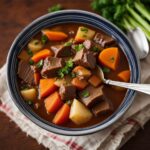 Beef Stew Shelf Life: How Long Does It Last in the Fridge?
Beef Stew Shelf Life: How Long Does It Last in the Fridge?
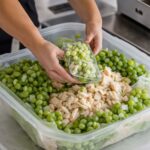 Can You Freeze Chicken Salad? Tips and Considerations
Can You Freeze Chicken Salad? Tips and Considerations
 How Long Can Cream Cheese Sit Out? Guidelines and Tips
How Long Can Cream Cheese Sit Out? Guidelines and Tips
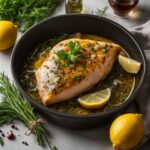 Marinating Chicken: How Long Is Too Long?
Marinating Chicken: How Long Is Too Long?
 Does Almond Milk Go Bad? How to Tell and Storage Tips.
Does Almond Milk Go Bad? How to Tell and Storage Tips.
 Can You Eat Expired Butter? What You Need to Know
Can You Eat Expired Butter? What You Need to Know


